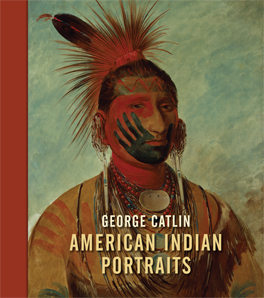George Catlin: American Indian Portraits opens today at the National Portrait Gallery in London. It’s the first major exhibition of the painter’s work in Britain since he unceremoniously fled the country in 1852 after having been incarcerated for debt in Queen’s Bench Prison. Catlin was a showman and artist who toured around the United States and Europe with his famed “Indian Gallery,” a spectacular display of materials gathered and produced during five separate journeys around the American West in the 1830s. “Catlin’s North American Indian Gallery” was comprised of a mix of portraits and artifacts, which were later supplemented with live performances by both costumed whites and actual Iowa and Ojibwa Indians. His show opened at London’s Egyptian Hall in 1840, and the popular acclaim it garnered sustained Catlin for almost a decade, during which he also made several tours of the Continent.

Ultimately a combination of bad luck and simple mismanagement doomed the venture and forced him to make an ignominious retreat back to the United States. Catlin was a pioneer of the ethnographic entertainment business, and his work laid down a template of sorts that Buffalo Bill’s Wild West show would so successfully exploit during its late nineteenth century European tours. I have written a full review for The World of Interiors that I don’t want to step on here, but I’ll link to it when it is published. Suffice it to say, the Indian Gallery raises some fascinating and complicated issues about representation, commerce, and colonialism that the exhibition does a good job of addressing. The curators, Stephanie Pratt and Joan Carpenter Troccoli, have also produced a fine catalogue that probes the lasting cultural legacy of Catlin’s work.

